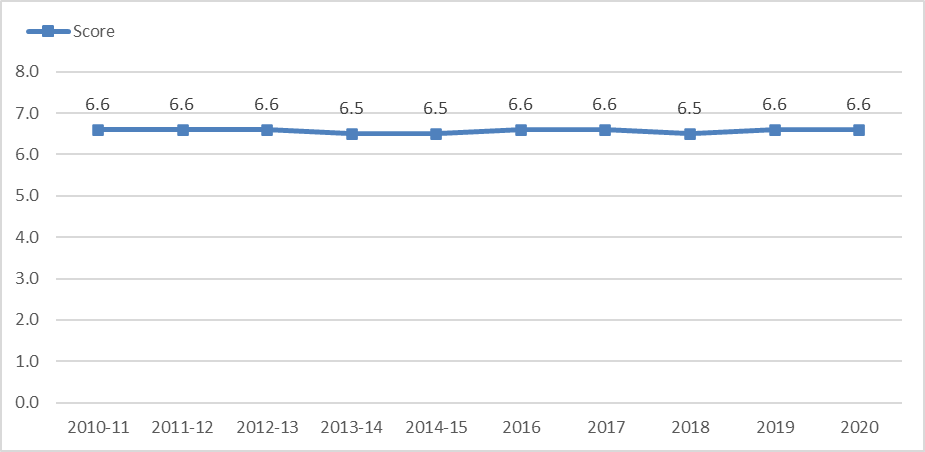Ontario’s Children’s Aid Societies performance indicators - Well-being
Overview
The well-being of children and youth in care is an important focus of the work of children's aid societies (societies), including Indigenous societies.
Societies report on one well-being performance indicator:
- The quality of the caregiver and child/youth relationship.
Average score of the quality of the caregiver and child/youth relationship on an eight-point scale (2010-2020 data)

The quality of the caregiver and child/youth relationship
Children and youth in care should have strong, caring relationships with their adult caregiver, or the adult who is most actively involved in their care and is most knowledgeable about them.
Research suggests that when children and youth have positive relationships with their caregivers, they feel more understood and may feel more accepted. It also improves the child’s/youth’s overall sense of well-being and their chance of a successful transition to adulthood.
This performance indicator measures the child's/youth's perception of their relationship with their caregiver. In 2020 the average score measuring the quality of the caregiver child/youth relationship was 6.6 out of eight, which has remained stable over ten years. Children in care between 10 and 15 have scored the quality of their relationship with their caregiver higher than youth aged 16 and 17.
This is an average score on an eight-point scale (where eight is the highest) and is based on the following questions:
- How well do you feel they understand you?
- How much fairness do you receive from them?
- How much affection do you receive from them?
- Overall, how would you describe your relationship with them?
| Year | Score out of 8 |
|---|---|
| 2010-11 | 6.6 |
| 2011-12 | 6.6 |
| 2012-13 | 6.6 |
| 2013-14 | 6.5 |
| 2014-15 | 6.5 |
| 2016 | 6.6 |
| 2017 | 6.6 |
| 2018 | 6.5 |
| 2019 | 6.6 |
| 2020 | 6.6 |
About the data
Only children and youth aged 10 to 17 years old and in care for more than a year are included in this data set of approximately 1,552 in 2020 (approximately 4,400 children and youth were included in 2011).
Results for 2020 include data from 37 societies.
Performance indicators by individual societies
The quality of the caregiver and child/youth relationship
This information shows ten years of data on the average score of the quality of the caregiver and child/youth relationship on an eight-point scale, by individual society. Scores are categorized by children and youth between the ages of 10 to 15-year-olds and youth who are 16 years or older.
This data is not available for some societies as they do not report their results.